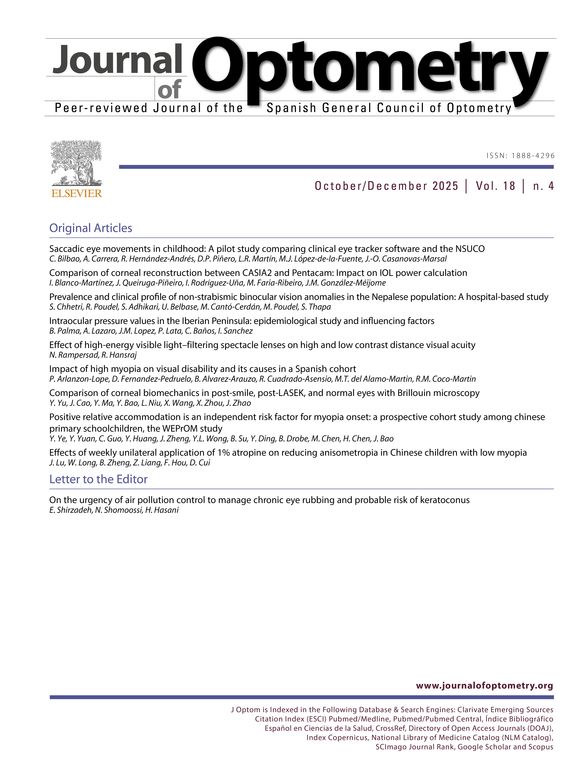Dear Editor,
With interest, we read the article titled “Photosensitivity and filter efficacy in albinism” published by Hansen et al.1 While the study addresses a pertinent topic in the field, we believe that there are certain areas that present opportunities for further research and improvement.
Firstly, we congratulate the authors for their valuable contribution to our understanding of photosensitivity in individuals with albinism. The study sheds light on important aspects of this condition, including filter preferences and their impact on alleviating photosensitivity. However, there are some research gaps and areas for potential refinement that I would like to highlight:
Lack of longitudinal data: The study is described as cross-sectional, providing a snapshot of photosensitivity and filter preferences at a single point in time. Longitudinal data is needed in this study to capture how photosensitivity and filter preferences evolve or change over an extended period, providing a more comprehensive and nuanced understanding of these factors in individuals with albinism.2
Objective measures of photosensitivity: The concern regarding “objective measures of photosensitivity” in the study is that the research primarily relies on participants' subjective reports of their photosensitivity, which are based on their own perceptions and self-assessments. While subjective measures can provide valuable insights, they may not provide the most accurate or objective assessment of photosensitivity.
Objective measures of photosensitivity would involve using standardized tests or measurements that are not influenced by individuals' perceptions or biases. For example, researchers could use instruments to measure how individuals react to different levels of light or specific wavelengths of light. These objective measures can provide more scientifically rigorous and less biased data about the extent and nature of photosensitivity in individuals with albinism. The objective measures allow providers to make more reliable recommendations regarding such activities as returning to work.3
The concern raised is that the study would benefit from incorporating these objective measures alongside subjective assessments to provide a more comprehensive understanding of photosensitivity.
Limited sample size and demographic diversity: The study had 81 participants, which, while not necessarily small, may still be limited in terms of generalizability. The participants were primarily of Danish/North European ethnicity, with a smaller representation of other ethnicities. This could limit the applicability of the study's findings to more diverse populations.
Diversity and generalizability: The study primarily includes individuals of Danish/North European ethnicity, with limited representation from other backgrounds. To enhance the generalizability of findings, future research could strive to include a more diverse sample that accounts for the genetic and phenotypic diversity of albinism on a global scale.
Ethical considerations: The study states that informed consent forms were not required due to the absence of invasive procedures. However, it is essential to recognize the ethical nuances of working with vulnerable populations, such as individuals with albinism. A more comprehensive discussion of the ethical considerations, including the potential impact on participants, would enhance the study's ethical soundness.4
Comprehensive filter information: While the abstract mentions a broad set of filters, specific details about filter types, characteristics, and their comparative efficacy are lacking. A more detailed analysis of the filters used and their effects on photosensitivity would contribute to a more comprehensive understanding of filter preferences and their effectiveness.5 We believe that the by addressing this gap, can improve and quality of research in this area.
None.








